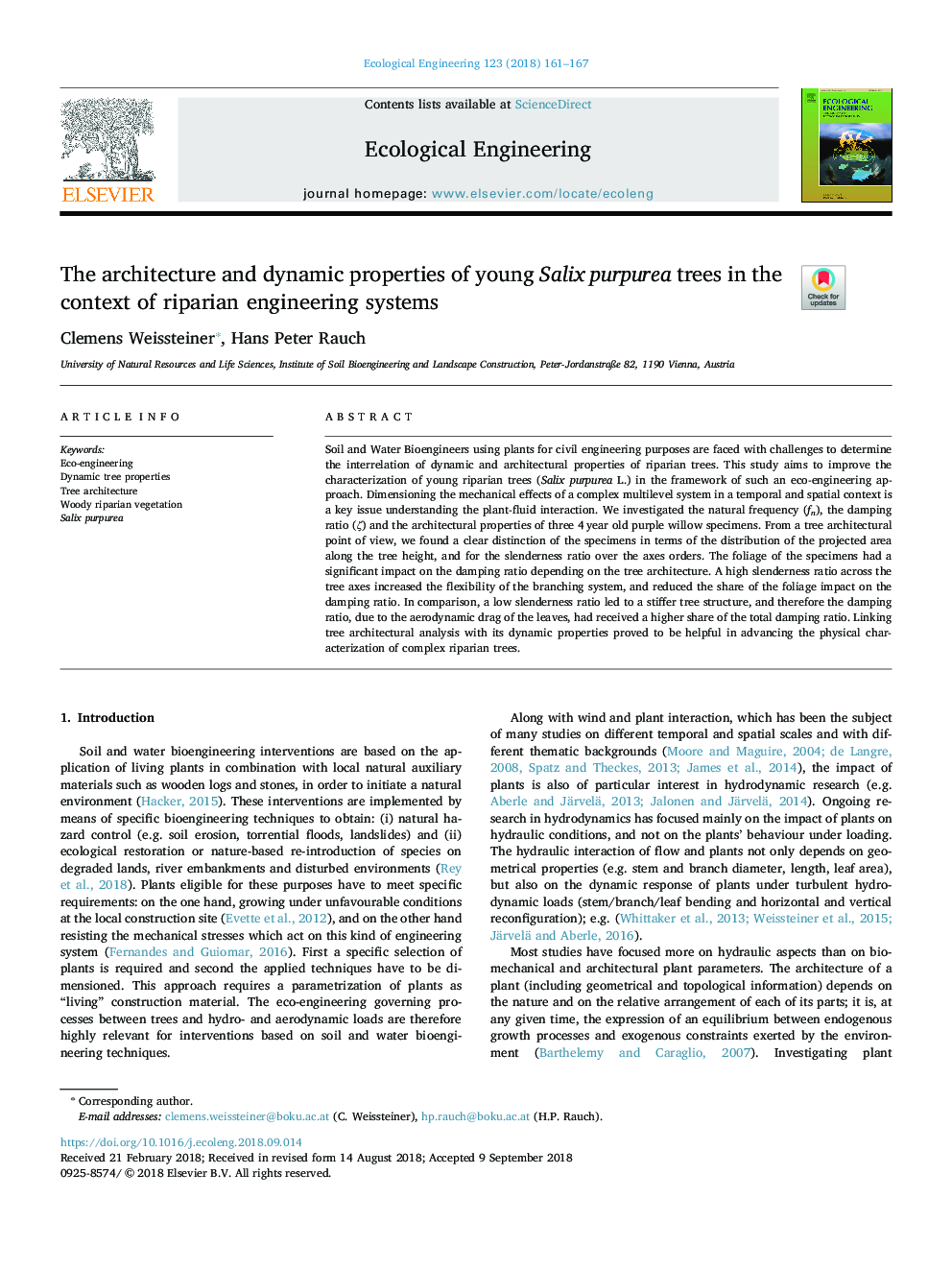| Article ID | Journal | Published Year | Pages | File Type |
|---|---|---|---|---|
| 10144365 | Ecological Engineering | 2018 | 7 Pages |
Abstract
Soil and Water Bioengineers using plants for civil engineering purposes are faced with challenges to determine the interrelation of dynamic and architectural properties of riparian trees. This study aims to improve the characterization of young riparian trees (Salix purpurea L.) in the framework of such an eco-engineering approach. Dimensioning the mechanical effects of a complex multilevel system in a temporal and spatial context is a key issue understanding the plant-fluid interaction. We investigated the natural frequency (fn), the damping ratio (ζ) and the architectural properties of three 4â¯year old purple willow specimens. From a tree architectural point of view, we found a clear distinction of the specimens in terms of the distribution of the projected area along the tree height, and for the slenderness ratio over the axes orders. The foliage of the specimens had a significant impact on the damping ratio depending on the tree architecture. A high slenderness ratio across the tree axes increased the flexibility of the branching system, and reduced the share of the foliage impact on the damping ratio. In comparison, a low slenderness ratio led to a stiffer tree structure, and therefore the damping ratio, due to the aerodynamic drag of the leaves, had received a higher share of the total damping ratio. Linking tree architectural analysis with its dynamic properties proved to be helpful in advancing the physical characterization of complex riparian trees.
Related Topics
Life Sciences
Agricultural and Biological Sciences
Ecology, Evolution, Behavior and Systematics
Authors
Clemens Weissteiner, Hans Peter Rauch,
